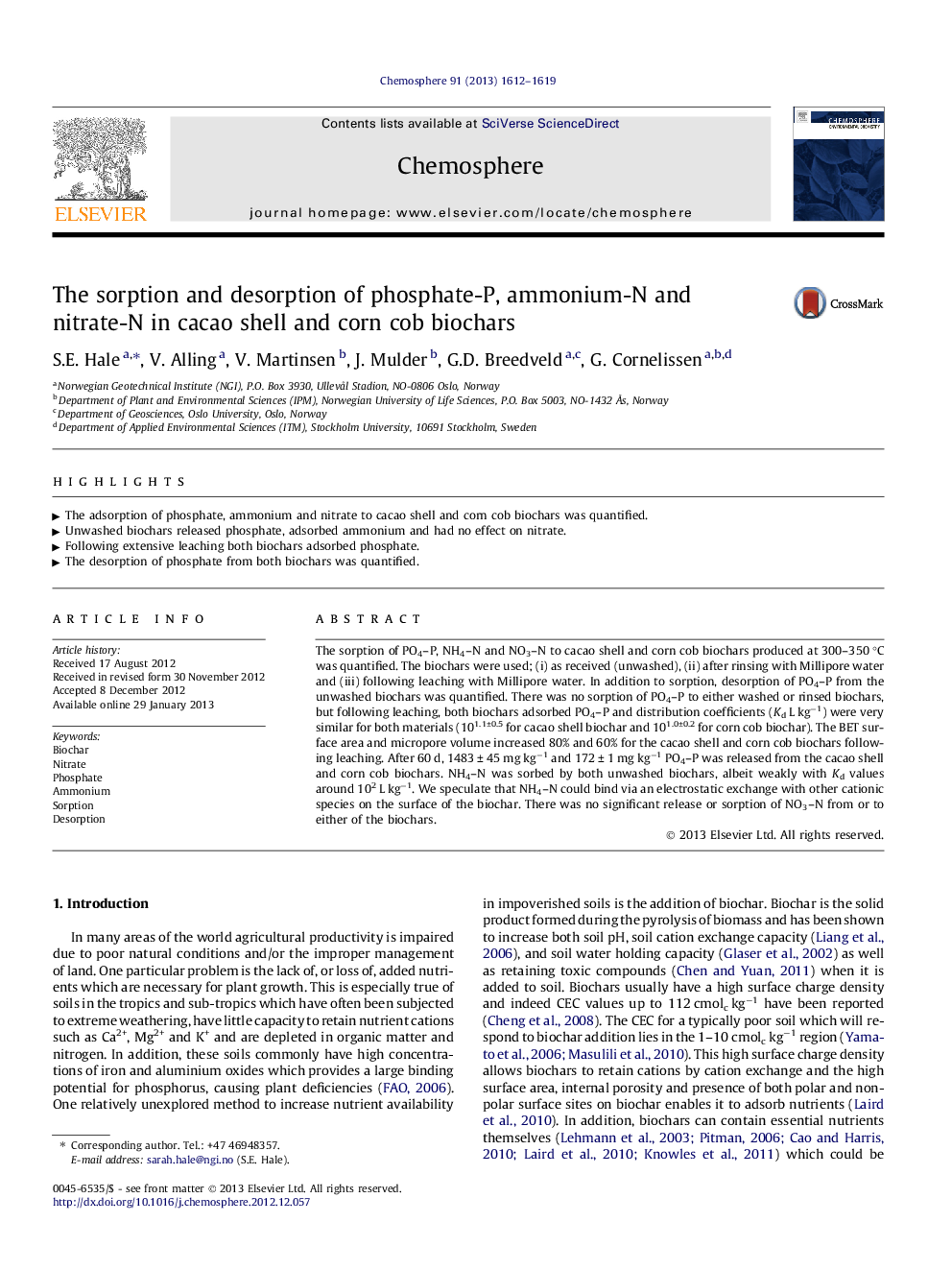| Article ID | Journal | Published Year | Pages | File Type |
|---|---|---|---|---|
| 4409419 | Chemosphere | 2013 | 8 Pages |
The sorption of PO4–P, NH4–N and NO3–N to cacao shell and corn cob biochars produced at 300–350 °C was quantified. The biochars were used; (i) as received (unwashed), (ii) after rinsing with Millipore water and (iii) following leaching with Millipore water. In addition to sorption, desorption of PO4–P from the unwashed biochars was quantified. There was no sorption of PO4–P to either washed or rinsed biochars, but following leaching, both biochars adsorbed PO4–P and distribution coefficients (Kd L kg−1) were very similar for both materials (101.1±0.5 for cacao shell biochar and 101.0±0.2 for corn cob biochar). The BET surface area and micropore volume increased 80% and 60% for the cacao shell and corn cob biochars following leaching. After 60 d, 1483 ± 45 mg kg−1 and 172 ± 1 mg kg−1 PO4–P was released from the cacao shell and corn cob biochars. NH4–N was sorbed by both unwashed biochars, albeit weakly with Kd values around 102 L kg−1. We speculate that NH4–N could bind via an electrostatic exchange with other cationic species on the surface of the biochar. There was no significant release or sorption of NO3–N from or to either of the biochars.
► The adsorption of phosphate, ammonium and nitrate to cacao shell and corn cob biochars was quantified. ► Unwashed biochars released phosphate, adsorbed ammonium and had no effect on nitrate. ► Following extensive leaching both biochars adsorbed phosphate. ► The desorption of phosphate from both biochars was quantified.
